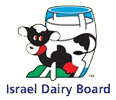Reflux has to be one of the most over diagnosed and yet least understood conditions of the 21st Century. Ask anyone above about forty and they look puzzled when you toss the term about - yet seemingly every other baby at a group now suffers from this rapidly spreading problem. It seems to have replaced "colic" at the doctors surgery - new mother, baby crying a lot, back arching; ah that will be reflux. Gaviscon prescription please! I would love to know just how much Gaviscon's profits have increased since this new trend.
On the flip side, infants with moderate to severe reflux (which can cause serious issues from aspiration to oesophageal damage) seem to really struggle to get anyone to take their problem seriously, beyond Gaviscon!
What is infant reflux?
As those listening at Chemistry class might remember, the term "reflux" (from medieval Latin reflūxus) means "flowing back". So, when you tell your doctor your baby is frequently being sick (sometimes copious amounts) and he tells you the baby has "reflux"; he is simply repeating back to you what you told him, using a more impressive sounding word.
If he adds "gastrointestinal oesophageal" he is telling you what is refluxing and where, ie contents from the stomach, into the oesophagus. If the amount of sick isn't sufficient to be termed reflux - it's considered normal "posetting". Generally reflux is forceful vomitting, whereas posetting is the effortless mouthful of milk infants can bring up after a feed (which can still look an impressive amount at the time, but isn't comparable to projectile).
 If baby isn't vomiting, but is very unsettled for long periods (read as screaming!), arching their back and displaying unusual feeding behaviour such as fussing, refusing or feeding very frequently - this is termed "silent reflux".
If baby isn't vomiting, but is very unsettled for long periods (read as screaming!), arching their back and displaying unusual feeding behaviour such as fussing, refusing or feeding very frequently - this is termed "silent reflux".
At the most extreme end of the scale the condition is termed GORD (gastrointestinal oesophageal reflux disease or Pathogenic GOR). Babies with GORD suffer from excessive reflux which if not appropriately managed leads to complicationd such as; inadequate growth, failure to thrive, feeding aversions and oesophagitis, or atypical complications such as wheezing, pneumonia and chronic sinusitis. It is more common in children with neurological impairments or physical abnormalities, and it is estimated around 3 in 1000 infants display symptoms of GORD.
Those who reflux without weight gain issues or apparent distress are labelled "happy spitters" and these babies are generally not medicated.
The vast majority of typical infants will outgrow reflux by around their first birthday - even those who suffer severely when younger.
So what's my problem?
A reason that is often given for around 60% of infants suffering from reflux, is that they have a weaker lower oesophageal sphincter (the muscular ring at the lower end of the oesophagus), making them more prone to refluxing stomach contents - but given the number now diagnosed with this condition, why are babies suddenly suffering en-mass from abnormally weak stomachs? I don't doubt there are some with an unusually weak valve, or other physical condition, but I do believe these are the minority.
Infants suffering with moderate to severe reflux can be naturally very distressed, there can be risk of aspiration as discussed and it can be a worrying and exhausting time for parents. Isn't just handing out mediction without investigation unfair?
Why?
Because several things are known to cause reflux - yet instead of looking at possible reasons why a baby is refluxing, the doctor (with little breastfeeding training or experience and likely pushed for time), deals with trying to stop the symptoms via medication.
Causes
Tongue Tie/High Palate - This in my experience almost always causes either reflux, wind or both. If you had problems feeding previous infants, have experienced nipple pain during your feeding experience (even if this has now ceased) have a baby that is fussy/unsettled/hates being put down/hates the carseat/feeds for a long period or feeds very frequently - rule this out before you start cutting things you love from your diet! Removing dairy in my opinion can potentially cause a reduction in symptoms - even if it's not the cause )more about dairy further down)... The tongue co-ordinates sucking/swallowing and breathing meaning any variation can cause further problems. (Brian Palmer also has also linked a restricted frenulum to acid reflux). Baby may present just as an oversupply baby, ie milk running out of sides of mouth, loud audible gulping, spluttering. Secondly baby needs to maintain a seal to form a vacuum when feeding, extremely difficult if you're tongue is restricted - causing increased intake of air again and difficulty obtaining fatty milk. I'm halfway through a blog entry specifically focusing on this!
Gut Flora - Candida (thrush), antibiotics and various other triggers such as food intolerances are linked with a less healthy gut flora. Probiotic supplement has been found by some sources to reduce colic/reflux symptoms.
Milk over supply/fast letdown - Reflux caused by a large supply or fast letdown is typically mild to moderate, and will in my experience usually manifest itself from around 3 weeks onwards, with 6 weeks being a prime time. Mums often comment baby gulps, coughs, gasps, splutters, clamps down, pulls from the breast or guzzles. Some find baby will feed until letdown - then pull off, arching and fussing or if it's severe refuse to latch at all. Other babies just appear to be fast feeders and don't seem to suffer until later. If mums have a large over supply, baby may display symptoms similar to that of a secondary lactose intolerance, as the infant struggles to produce enough lactase to digest all the lactose rich milk. See foremilk/hindmilk and a lot of confusion, for further information about this. If you think this may be the case, contact your local Lactation Consultant or registered Breastfeeding Counsellor who can discuss this further with you.
Latch/attachment problems - If baby is not well attached he is unable to milk the breast effectively. This may prevent him from effectively releasing the fat and result in more lactose rich milk (along with perhaps several other issues). Supply may decrease longterm with incorrect attachment, therefore if you think this may be the case contact your local Lactation Consultant or registered Breastfeeding Counsellor who can discuss this further with you.
Long feed spacings - Whereas in many countries, babies are fed little and often (the optimum way for a human infant) Western feed spacings are quite different. Typically larger volumes or milk are transferred less frequently, because this fits with what women expect (based on a non breastfeeding culture). Whilst some infants adjust to this pattern, others struggle with this unexpected strain on their gut. The reason this problem may be increasing is also due to mum's diet becoming more calorific, which in turn may lead to larger volumes of milk per sitting. Combine with a larger gap and letdown can easily become overpowering - hitting the stomach before refluxing straight back up!
In addition mums in the West are more like to do things we know contribute to the incidence of reflux; such as feed in positions which place baby laying down on their back fighting gravity, and then again in the cot, pram or moses basket after a feed. Compared to other cultures, Western infants spend a lot of time on their backs (hence the increasing rates of Plagiocephaly/Flat Head Syndrome, but that's one for another post!).
Residual Birth Trauma - Long births, C-Sections, extremely fast births, posterior pregnancies and labours can all impact. Baby takes immense forces through the sacrum and occipital area (back of head) during labour, which can compress the nerves linked with digestion. Furthermore if the diaphragm becomes distorted, it can compromise the ability of the gut to retain it's contents (ala reflux). Some mums note amazing results with Cranio-Sacral Osteopathy - Annalisa Barbieri wrote an article about birth and osteopathy when her daughter was diagnosed with reflux. A basic introduction well worth a read if the above describes your labour is this
Cow's Milk Protein Allergy - Unfortunately many paediatricians are still telling mothers if their baby doesn't have IgE mediated allergy (the typical hives, swelling etc) - it's not the cow's milk protein; absolutely not true. There are at least 30 antigenic primary proteins in milk, which can get through the digestive tract intact and cause reflux. These antigens can also be responsible for delayed immune responses, producing disease in any and all tissues.
Interestingly untreated allergy can lead to a litany of gastrointestinal, respiratory and/or dermatological problems; with increased rates of infection, particularly in the ears and sinuses. This can result in pain, recurrent illness, poor growth, delayed development and failure to thrive.” Now read back up to the symptoms of GORD and compare the two - how many cases of allergy are misdiagnosed and mismanaged as severe reflux? Dairy can also hide in foods you would never expect, under various guises. Many infants allergic to dairy also display a similar reaction to Soy products. If you suspect milk protein may be an issue, look for information about "non IgE mediated allergy" and contact your location Lactation Consultant or Breastfeeding Counsellor and your Doctor.

Prematurity - Premature infants are more likely to reflux feeds than a term baby due to immature development and reduced muscle tone. Again our culture gives much larger feeds, more infrequently than experts suggest biologically normal.
Will stopping breastfeeding help?
No. Reflux is FAR more common in the non breastfed infant Those fed by bottle typically have longer feed spacings, increased volume and increased exposure to cow's milk protein. As discussed in this blog post, it's also a lot easier for bottle feeding mums to overfeed their baby causing reflux. For the majority of mothers, introducing bottles full-time, also results in formula usage. The impact of this on the health of the infant must therefore also be considered - the bacteria profiles of a breastfed and one receiving a breastmilk substitute are very different, some sources list overgrowth of bad bacteria as a reason in itself for reflux. If this is suspected, pro and prebiotic supplementation may help the non breastfed baby.
If allergy to cow's milk protein is suspected, eliminating from mum's diet (in all forms mentioned above) prevents baby receiving any!
Updated 2011
















